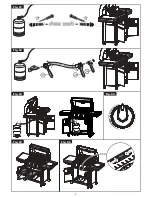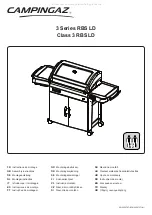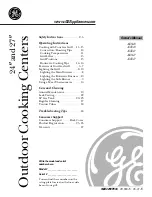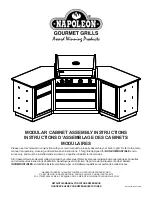
9
Original instructions
EN
Drilling
Set the torque adjustment collar (8)
against this symbol to choose drilling in
metal, wood, etc.
The power tool is equipped with an electric
brake. The spindle stops rotation immedi-
ately after the switch has been released.
At overloading in drilling mode release the
switch immediately to prevent prolonged
overloading and overheating the motor.
SPEED SELECTOR SWITCH
(FIG. 3)
The two-speed selector switch (2) enables you
to select the appropriate gear with the optimum
speed and torque to suit the application.
WARNING:
When changing the gear
ensure the drill is switched off.
1. To select the low gear (low speed, high torque
setting), push the gear selector (2) backward.
The digit
1
on the switch will be displayed.
2. To select the high gear (high speed, low torque
setting), push the gear selector (2) forward.
The digit
2
on the switch will be displayed.
INSERTING AND REMOVING BITS
(FIG. 4)
WARNING:
Remove the battery or set
the forward/reverse switch (3) in central (neu-
tral) position (A).
The drill is fitted with auto spindle lock which
means if you try to rotate the chuck by hand the
spindle will automatically lock. This means you
only need to grasp the chuck and rotate the chuck
housing to remove or fit accessories.
▪
Hold the machine with one hand and rotate the
chuck with the other hand.
- To open the chuck, rotate it anti-clockwise. (B)
- To close the chuck, rotate it clockwise. (D)
▪
Insert the bit. (C)
▪
Close the chuck.
▪
Perform a test run to check that the bit is prop-
erly clamped in the centre.
REPLACING THE CHUCK
WARNING:
Replacing the chuck must
be performed only in authorised service cen-
tres. Please do not attempt to replace the chuck
with available tools otherwise you may damage
the cordless drill/driver.
DRILLING
Drilling metal
▪ For maximum performance, use high speed
steel bits for drilling in metal or steel.
▪ Ensure that the torque adjustment collar (8) is at
position “drill bit”.
▪
Begin drilling at very low speed to prevent the
bit from slipping off the starting point.
▪
Always clamp sheet metal.
▪
Support thin metal with a block of wood to avoid
distorting it.
▪
Use a punch to mark the centre of the hole.
▪
Use a suitable lubricant for the material you are
working on.
Material
Lubricant
Steel
Oil
Aluminium
Turpentine or paraffin
Brass, copper or
cast iron
Do not lubricate
Drilling plastics and plastic coated chipboard
▪
Use high speed drill bits.
▪
Refer to “Drilling wood” below.
Drilling wood
▪ For maximum performance, use high speed
steel bits for wood drilling.
▪ Ensure that the torque adjustment collar (8) is at
position “drill bit”.
▪
Begin drilling at very low speed to prevent the
bit from slipping off the starting point. Increase
the speed as the drill bites into the material.
▪
When drilling through holes, place a block of
wood behind the work piece to prevent ragged or
splintered edges on the back side of the hole.
All drilling operations
▪
Use only sharp drill bits.
▪
Mark off the centre of the hole using a centre
punch or nail.
SCREWING / UNSCREWING
Select the appropriate torque by placing one of
the numbers, marked on the torque adjustment
collar (8), against the arrow on the tool housing.
Insert the necessary bit.
pages BR2-7.2LiHD.indd 9
9.11.2011 г. 09:43:13 ч.












































